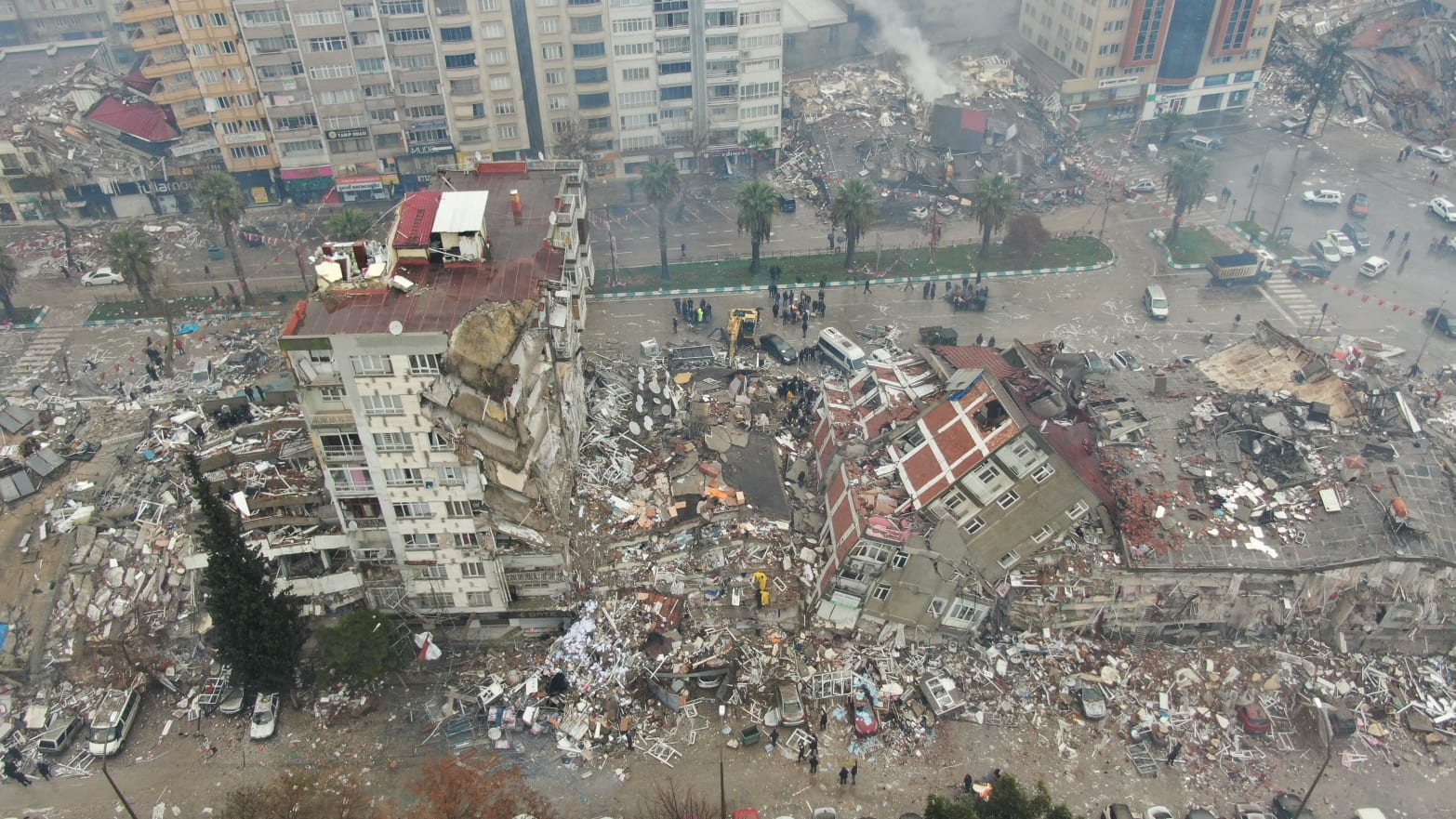
A powerful 7.8 magnitude earthquake hit southeast Turkiye and Syria early Monday, making buildings fall down and sending panicked residents pouring outside in a cold winter night. More than 20,000 have been confirmed dead in both countries and thousands more injured with the death toll expected to rise. Why did this happen?
Turkiye sits in an earthquake hot spot. Three tectonic(地质构造的) plates—the Arabian, Anatolian and African plates—meet in this region. Historical records of earthquakes in the region go back at least 2,000 years, to a quake in 17 CE that leveled a dozen towns. The East Anatolian Fault zone that hosted these earthquakes is at the boundary between the Arabian and Anatolian tectonic plates, which move past each other at about 6 to 10 mm per year. The elastic(有弹性的) strain that accumulates in this plate boundary zone is released by earthquakes happening occasionally, which have occurred for millions of years. ▲
Many of the collapsed buildings appear to have been built from concrete without enough seismic reinforcement(抗震加固). Seismic building codes in this region suggest these buildings should be able to sustain strong earthquakes—where the ground accelerates by 30% to 40% of the normal gravity—without causing this type of complete failure. The 7.8 and 7.5 earthquakes appear to have caused shaking in the range of 20 to 50% of gravity. Some of these buildings thus failed at shaking intensities(强度) lower than the “design code”.
Even though Turkish authorities know many buildings are unsafe in earthquakes, it is still a difficult problem to solve. Many of the buildings are already built, and seismic retrofitting(翻新) may be expensive or not considered a priority compared to other socio-economic challenges. In 2019, Turkey adopted new regulations to ensure buildings are better equipped to handle shaking. While the new rules are welcome, it remains to be seen whether they will lead to genuine improvements in building quality.
For now, aftershocks continue to shake the region, and search and rescue efforts continue. Once the dust settles, reconstruction will begin—but will we see stronger buildings, able to withstand the next quake, or more of the same?
本时文内容由奇速英语国际教育研究院原创编写,未经书面授权,禁止复制和任何商业用途,版权所有,侵权必究!(作者投稿及时文阅读定制请联系微信:18980471698)

